There will be plenty of economic data this week, but Fed commentary will be absent. The Fed is in the middle of its blackout period so we won’t hear from it again until Dec. 14 at the FOMC meeting.
I think the significant number of the week comes on Friday, the University of Michigan Inflation expectations for one year and 3-5 years; estimates are for 4.9% and 3%, respectively. I think consumer expectations are essential, hitting a peak of around 3.1% and falling through most of the summer and then into the fall has now reversed higher. It raises the question of whether this is a series trending lower, making lower lows and lower highs, or a series making higher lows and higher highs. It matters because if the expectations are for inflation to rise in the future, it could suggest that inflation will be much harder to bring down.

Today's ISM services report will also be critical. That is estimated at 53.3, down from last month’s 54.4. The ISM manufacturing report suggested the economy is inching towards an actual recession, and the services sector could confirm or deny whether that is happening. It would probably take a reading below 52 to signal the potential for a recession.
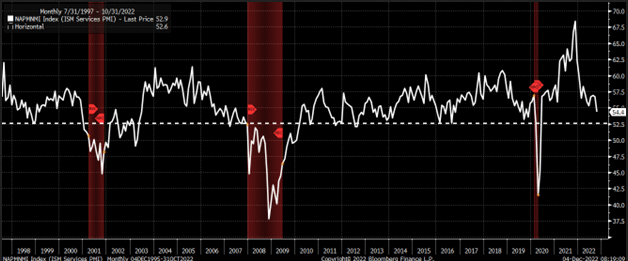
I think if we were to get a cooler-than-expected ISM report and a hotter University of Michigan report, coupled with the hot wage growth from Friday’s job report, it would suggest that we have entered a period of stagflation. A time of slowing economic growth, but rising wages and high prices. The reason wages could be increasing is due to the size of the labor force shrinking and the number of people not in the labor force rising. The data show that the number of people not in the labor force has pushed back above 100 million, while the population has declined, and the number of people working has declined.

Add that there are nearly 10.7 million job openings and just 6 million people unemployed. You can see why wages are rising and why consumers expect inflation to be higher over the long term.
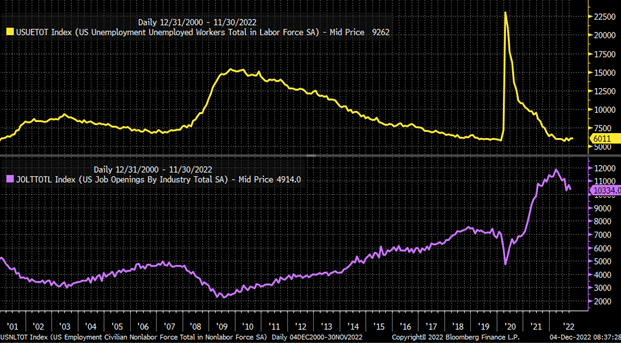
So it seems more than likely that we will see slower growth at some point, and prices will remain high as wages keep rising. It will create a terrible environment for businesses, forcing them to keep raising prices or see margins and profits deteriorate. So the data this week is essential.
S&P 500
The S&P 500 gapped lower on Friday by more than 1%, rallied back to fill the gap, and closed down by just 12 bps. Now, depending on how you want to look at things, the S&P 500 is inching closer to the large trend line which started in January and needs to close above 4,150 for an official break out.
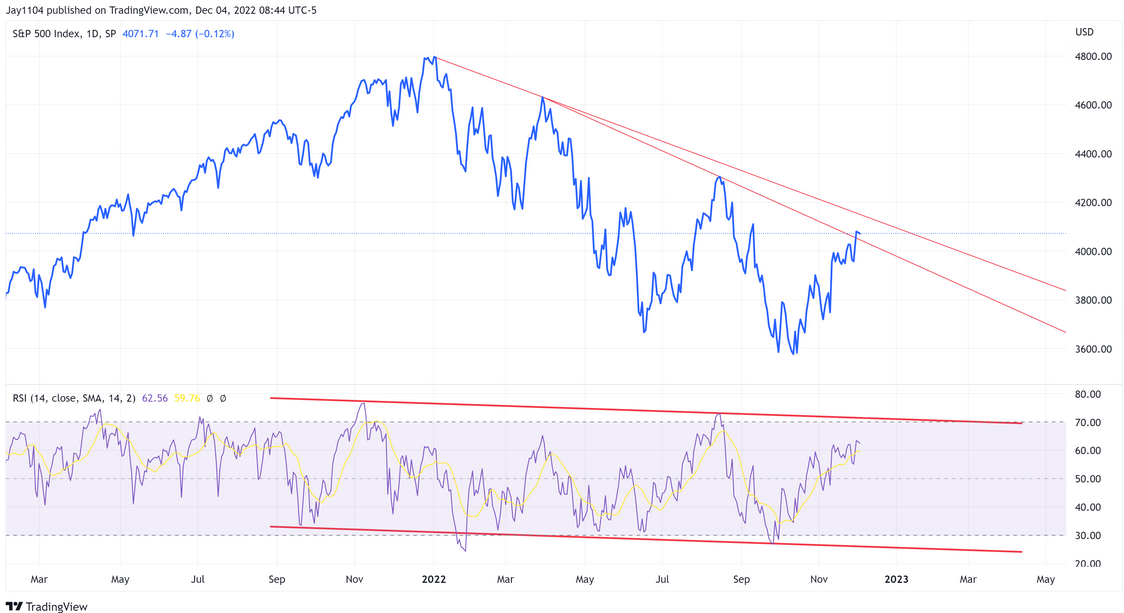
Or it has tested that trend line at 4,100 and failed. Now you ask how there can be two trend lines that can be so different. Well, the top chart is based on closing highs, and the bottom chart is based on Intraday highs, and it does make that much of a difference.
In this type of environment, it is pretty easy to be faked out, and for me, I have a few criteria to determine whether or not a move above the trend line is real. First, I want to see the index gap above the trend line and, more importantly, close above the closing trend line.
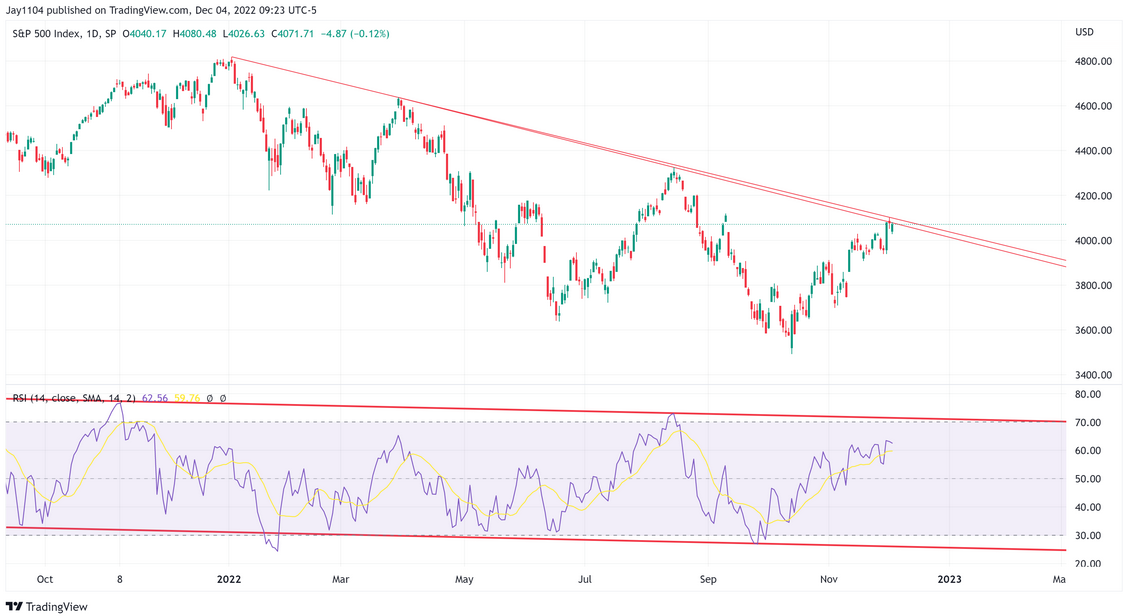
What I do know so far is that neither has happened. The index rose to the Intraday high trend line at 4,100 and has thus far failed, which matters most. It may have even risen enough to fill the gap from September 13. So instead of trying to predict where the index will head, it is worth waiting a day or maybe two to find out what it wants to do. But my gut says it will not break the closing trend line.
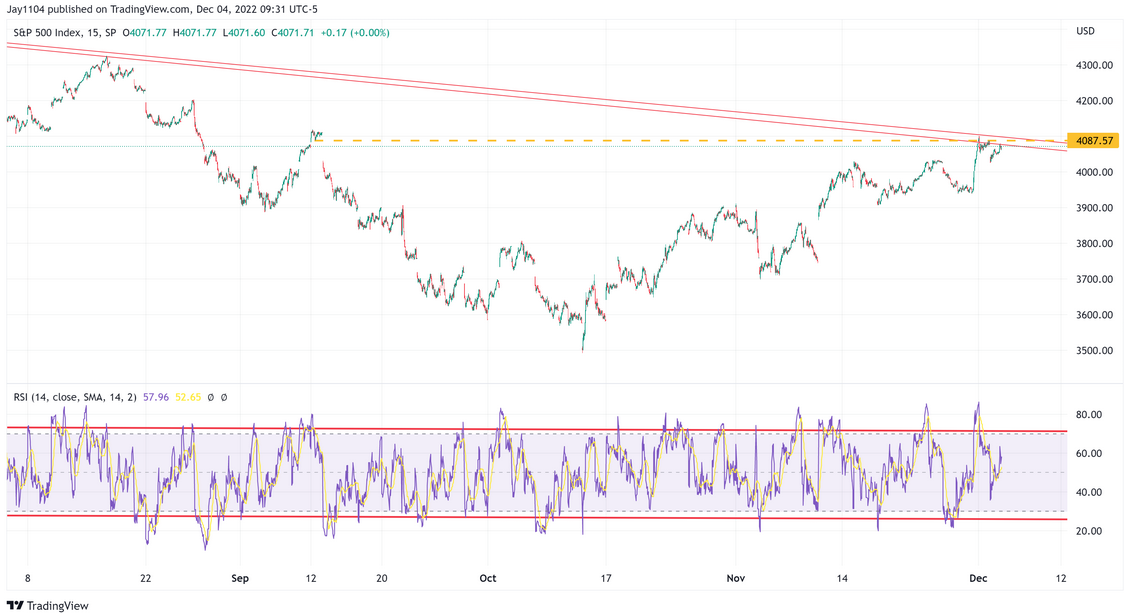
One reason is that I think there is a diamond reversal pattern on the Intraday chart, which usually results in the index returning to its origin, which would be at 3,950.

VIX
The other reason I feel this way is that the VIX spot minus the VIX 3-month generic futures contract fell to -5.78, and this year when the number has fallen below -5, it has told us we are in a region of a market top, and once it gets below -5.7, it suggests we are at a market top. It doesn’t mean the indicator has to work again this time, but that is what has happened in the past.
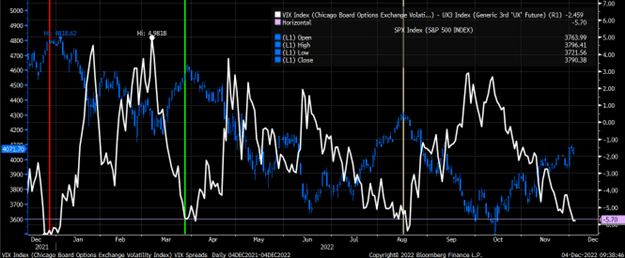
Nikkei
Meanwhile, the Nikkei has turned lower in recent days, and this is important because if the Nikkei continued to fall, it would be a negative indicator for the Dow Jones. The Dow Jones has been moving with the Nikkei for some time, and this is the first time the two have diverged recently.
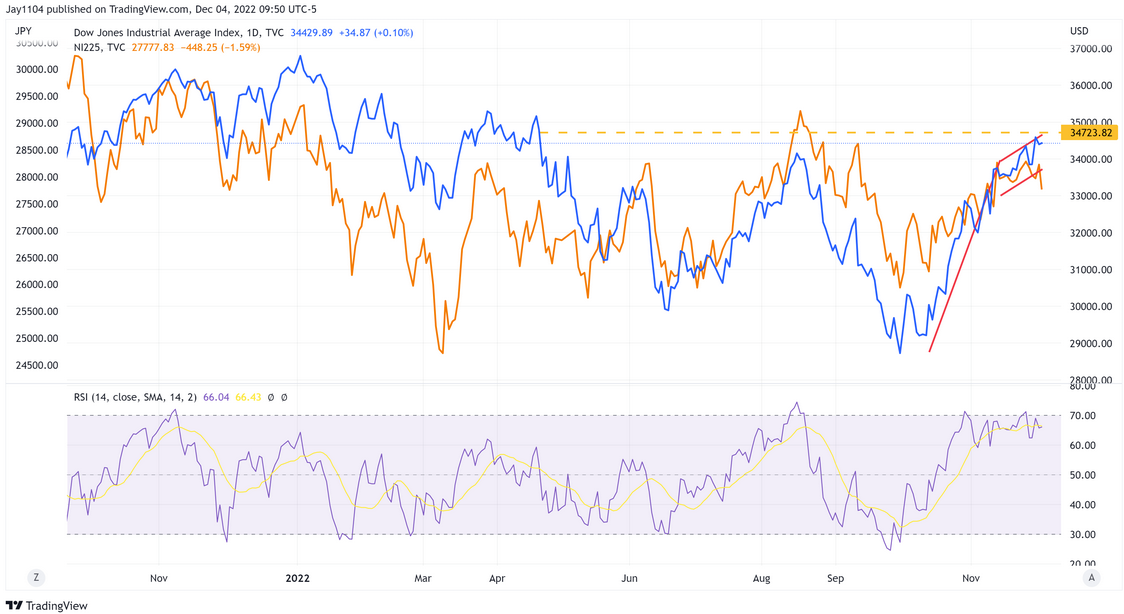
Dow Jones
Additionally, the Dow has a rising flag pattern present, and those are bearish reversal patterns. It would suggest the Dow is near or at a peak, and a break of 33,500 would signal a trend reversal.
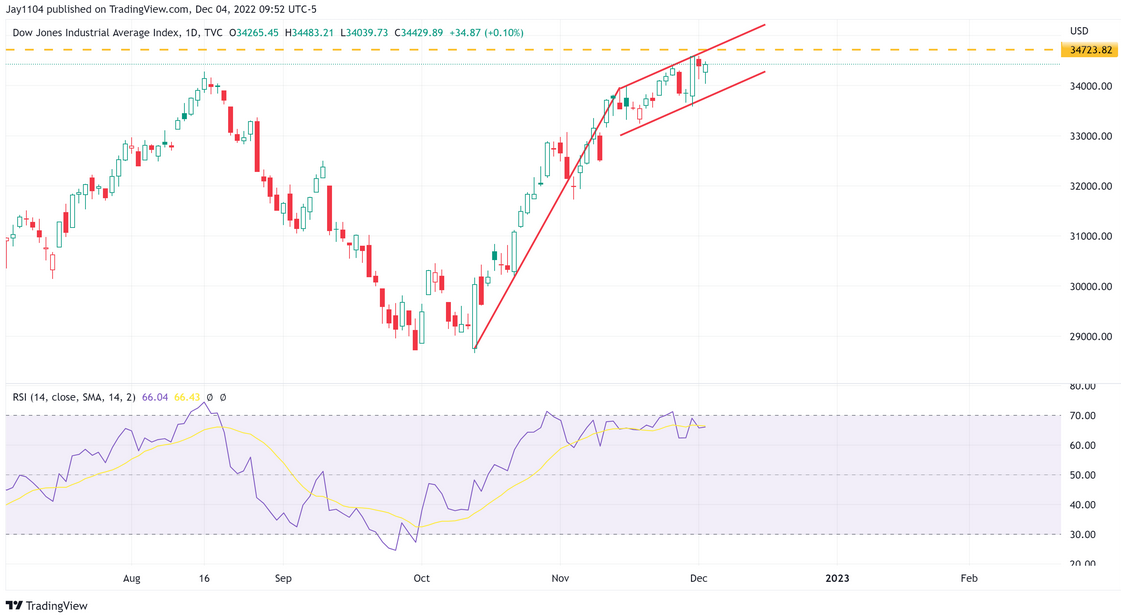
Energy
Meanwhile, the Energy ETF (NYSE:XLE) has diverged from oil, and that divergence probably isn’t going to last much longer. The XLE has formed a diamond reversal pattern, indicating that the XLE could be heading lower to $78.50.
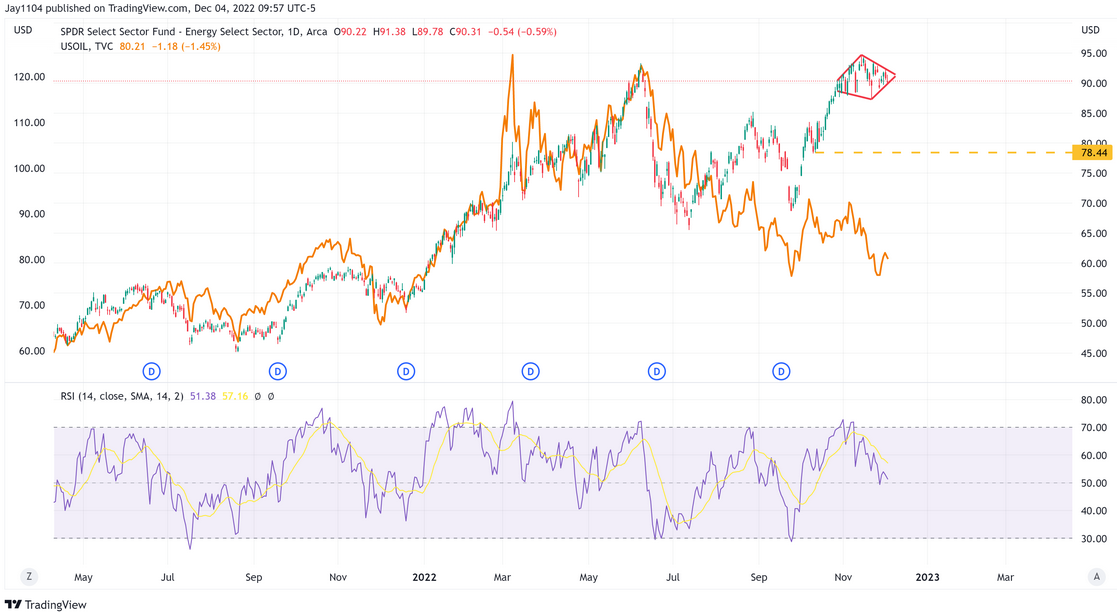
Goldman Sachs
Goldman Sachs (NYSE:GS) has also formed a diamond reversal pattern, and if that plays out as I expected, it could result in Goldman falling back to support at $352.

Exxon
Exxon Mobil (NYSE:XOM) has the same diamond pattern formed as in the XLE and Goldman. If it is the case that it is a diamond pattern, it would probably mean Exxon falls back to $102.
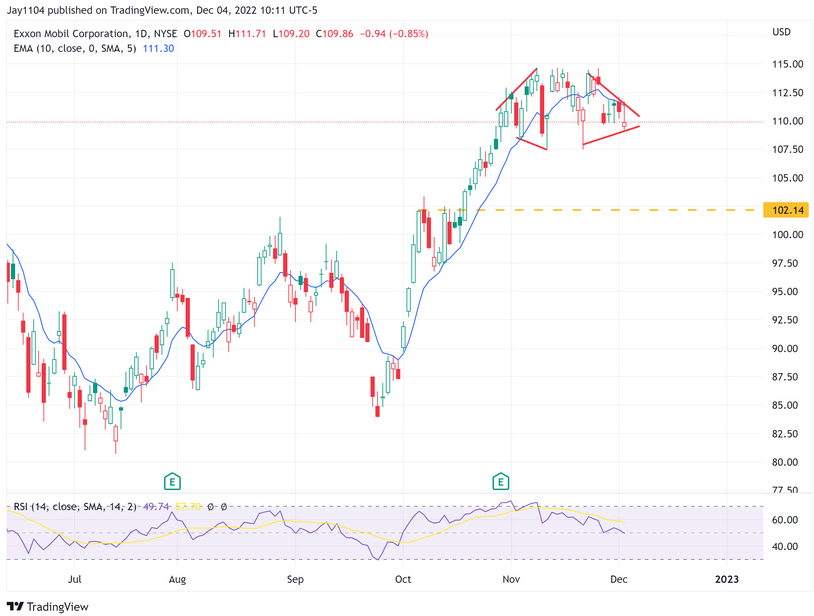
Which stock should you buy in your very next trade?
AI computing powers are changing the stock market. Investing.com's ProPicks AI includes 6 winning stock portfolios chosen by our advanced AI. In 2024 alone, ProPicks AI identified 2 stocks that surged over 150%, 4 additional stocks that leaped over 30%, and 3 more that climbed over 25%. Which stock will be the next to soar?
Unlock ProPicks AI

